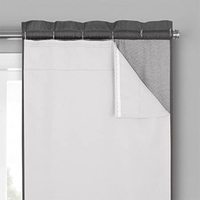8 expert-approved ways to lower heating costs this winter
Staying warm shouldn't have to cost a fortune, here is how to lower your heating costs through winter
- (opens in new tab)
- (opens in new tab)
- (opens in new tab)
- Sign up to our newsletter Newsletter


Understanding how to lower heating costs has never been more important than this winter, and with prices expected to continue to rise, we are all becoming experts in reserving precious resources.
Whatever home heating type you have, there are some simple tips professionals always recommend to help cut energy bills, keep heat inside, and save money at home while remaining cozy.
Here, we have spoken to experts to learn how to lower heating costs in winter while staying safe and warm in our homes.
How to lower heating costs
Lowering heating costs is not as simple as turning off the heating. As reported by the World Health Organization (opens in new tab), ‘there is an association between cold indoor temperatures and adverse health effects,’ making the turning off of heating completely in winter unadvisable. In fact, it is recommended that an average temperature of 64 degrees Fahrenheit is maintained throughout the main living spaces of a home, making learning how to make heating more efficient all the more important this winter.
1. Conduct a home energy audit

‘Conducting a home energy audit to determine where your home may be in need of weatherization upgrades is a great way to reduce heating costs,’ explains Greg Fasullo, CEO of Elevation (opens in new tab), a fully integrated residential energy solutions company. ‘Energy audits performed by qualified contractors can cost as little as $100. Getting a more clear picture of areas in your home that are wasting heat and increasing costs will be worth it in the long run.
‘Your energy audit may reveal a need for insulation replacements, air sealing, upgraded windows, and doors, or improved ventilation. Again, these upfront costs will be worth it when your home is losing less heat and cool air and is overall a more comfortable space to live in. The EPA has estimated that air sealing a home and improving insulation in attics, crawl spaces and other areas can save a homeowner an average of 15%.
‘Many of these home improvements that prioritize energy efficiency are eligible for federal rebates and tax credits through the Inflation Reduction Act. In some cases, homeowners can save up to 30% on the cost of the task. There are also statewide programs available, checking the Energy Star gov website (opens in new tab) is a great place to start looking for these!’
2. Check your attic for insulation and gaps to help prevent heat loss

‘Go to your attic first!’ advises Doug Greene, owner of Signature Properties (opens in new tab), Philadelphia. ‘Heat rises and people aren't even sure if their attic is insulated, enclosed, or part of the heated space in the building. Look for gaps and holes near recessed lights and plumbing pipes,’ he recommends. ‘This will be the first place heat is escaping from the living space below.’
Once you have addressed any gaps or holes with a sealant, take care to wrap any vent ducts in attics with foil insulation to help prevent drastic heat loss too.
Aluminum Foil Tape | from $17.09 at Amazon (opens in new tab)
Designed to easily seal HVAC Air Ducts as well as other hot or cold intakes around the home.
3. Consider having a professional alter your furnace for more efficient heating

‘Call an HVAC technician and get your furnace tuned up. Many people think that a heater is binary – it works or it doesn't. That's simply not true,’ advises Doug Greene, of Signature Properties. ‘Years in this business have taught me that a good heating and cooling expert is worth their weight in gold. They will not only optimize the distribution of heat throughout your house, but they will also look for ways to dial in the systems to save you money.’
When altering your furnace for winter, consider changing the furnace filter out. You may even be able to pick a furnace filter at Amazon (opens in new tab) that's compatible with the furnace you have at home. An old or dirty filter can lead to extortionate heating costs as it runs less efficiently. What’s more, newer electrostatic filters offer the ability to trap allergens, reducing the need to open windows to ventilate a home in winter too.
4. Seal up gaps around windows and doors to prevent cold drafts from cooling down your home

A golden rule to follow when heating a home is, if cold air can get in, then hot air can escape draft-proofing gaps around doors and windows is the easiest way to make your heating more efficient and lower heating costs. ‘Doors and windows are usually culprits for a cold house in the winter,’ Doug Green says. ‘This is something many homeowners can fix themselves by installing weather stripping or sealant around the door or window.’
Weather Stripping Brush – Was $9.99, now $6.98 at Amazon (opens in new tab)
The weatherstripping pile, made of environmentally friendly woven material, is super adhesive, durable and waterproof. Effective for keeping your house warm in winter and cool in summer.
5. Block up unused chimneys to prevent heat from escaping

A roaring fire is the epitome of cozy in winter, however, if your fireplace is out of action, then blocking up the chimney can help to reduce heat loss. When blocking up a chimney, steer clear of using textiles such as old pillows or blankets. These materials are porous, meaning they will quickly become damp and form mold and mildew, allowing cold air in and also posing a health hazard in and of themselves.
Instead, consider a chimney balloon, at Amazon (opens in new tab) to effectively block up the chimney throughout winter, with less room for mistakes or permanent damage. Alternatively, opt for a sheep's wool chimney blocker, also at Amazon (opens in new tab) with easy removal to temporarily block a chimney. Just makes sure to remove it if you ever want to get your log burner back in action again.
If your fireplace is working, however, knowing how to prep your chimney for winter properly can help make wood burners more efficient and safer to run throughout the cold period.
6. Keep your home at a constant temperature to avoid having to reheat a freezing space

It will take longer to heat up a space from freezing as opposed to reheating an already fairly warm room. ‘My last tip is to keep the house at a consistent temperature,’ Doug Greene advises. ‘If you constantly turn off the heat thinking that you will save money, it actually may end up costing you more in the long run. It takes more power and fuel to turn a cold house into a warm one than it takes to maintain a warm home.’
To do this, invest in a smart thermostat that you can either control from anywhere, or program to come on automatically once your home reaches a certain temperature. This way, you do not have to run your heating constantly (which wastes more money than it saves, even on a lower temperature setting) but maintain a steady internal temperature throughout the day without you having to fuss. It's also worth knowing the ideal temperature to get your thermostat on when on a winter vacation to avoid plumbing problems.
7. Dress for cooler weather to feel cozier indoors

When we suggest dressing for cooler temperatures we do not, of course, mean to wear your outside coat around the house but be logical in your attire. Choosing thicker materials like super soft cashmere, or more affordable merino wool, which is touted to help keep you cool in summer and warm in winter, can help to regulate body temperature and prevent you from feeling the cold as much.
8. Purposefully pick home decor that will help keep you warm

In winter, swap out some of your summer decor for thicker, more wintery options such as luxurious wool blankets and a high tog comforter or duvet inserts to help cozy up and avoid feeling the cold. You may also want to consider adding extra rugs throughout your home, even in areas with thinner carpets to help prevent heat loss through uninsulated floors (we have rounded up a list of the best places to buy rugs for you).
Adding curtains, or changing them to thermal curtains, is also a wise choice when trying to make heating more efficient as they trap cold air before it enters and cools your home as well as prevent hot air from escaping as easily. If you are not looking to change out your window treatment, then clip-on thermal curtain liners are available on Amazon (opens in new tab), allowing you to convert your existing drapes for less than half the price of new ones.
Thermal Liner for Window Curtains – was $24.99, now $13.95 at Amazon (opens in new tab)
Thermaliner panels have been laboratory-tested and designed to block out intrusive sunlight, reduce unwanted noise, and can help to save on home heating and cooling costs. Provides an insulated barrier against summer heat and winter chill
What temperature is too cold for a house?
According to the World Health Organization, an internal temperature of 62 degrees Fahrenheit during the day is recommended to prevent illness, any colder is considered too cold for a lived-in house. If you have vulnerable people in your home such as the elderly, sick, or young children, then a slightly higher temperature of 70 degrees is preferable.
What temperature should I put my heat on to save money?
When trying to lower heating bills, setting a thermostat to around 68 degrees Fahrenheit can help to keep costs down. Although it may seem counterintuitive to turn the thermostat down when trying to get warm, a couple of degrees is enough to significantly lower bills as less energy is used altogether.

Chiana is a junior writer for Homes & Gardens having joined Future plc as a new graduate in 2022 after achieving a 1st class degree in Literature at university. She first became interested in design as a child after spending her summers helping her parents redecorate her childhood home. As a long-time reader of Future’s homes titles, Chiana is constantly finding new inspiration at work as she focuses on emerging trends, how-to’s, and news pieces.
-
-
 Robert Pattinson just bought a Spanish Colonial-style home – with an interior designer past
Robert Pattinson just bought a Spanish Colonial-style home – with an interior designer past'The Batman's' Robert Pattinson and Suki Waterhouse purchased the Jeff Lewis-designed Hollywood Hills estate for $5.3 million
By Megan Slack • Published
-
 7 expert-approved methods to remove candle wax from carpet
7 expert-approved methods to remove candle wax from carpetCleaning professionals share their tips on how to remove candle wax from carpet
By Millie Hurst • Published




